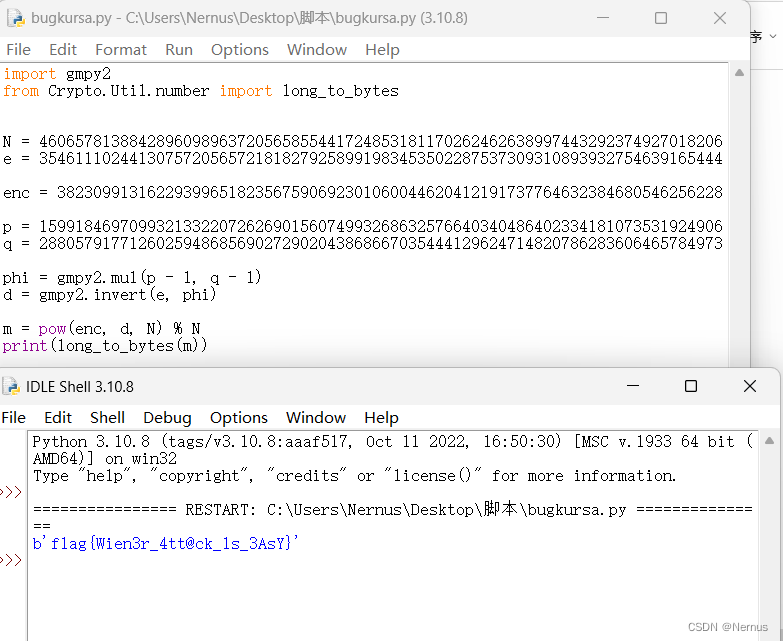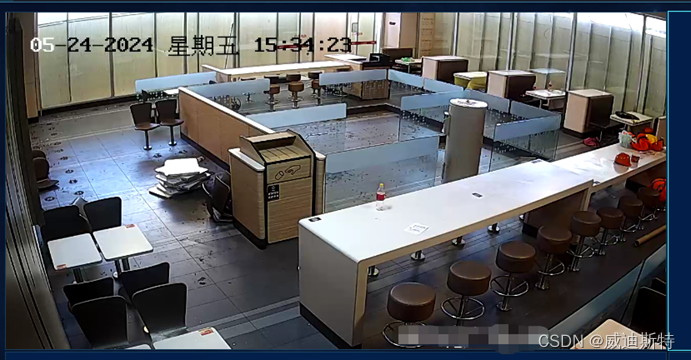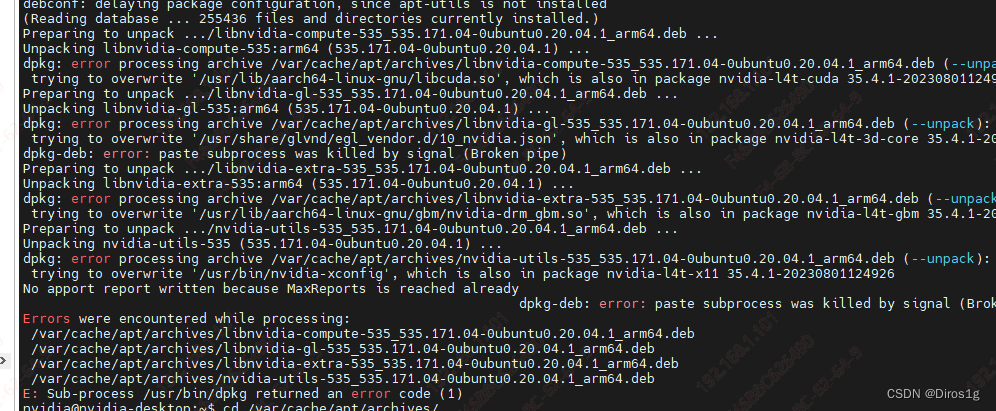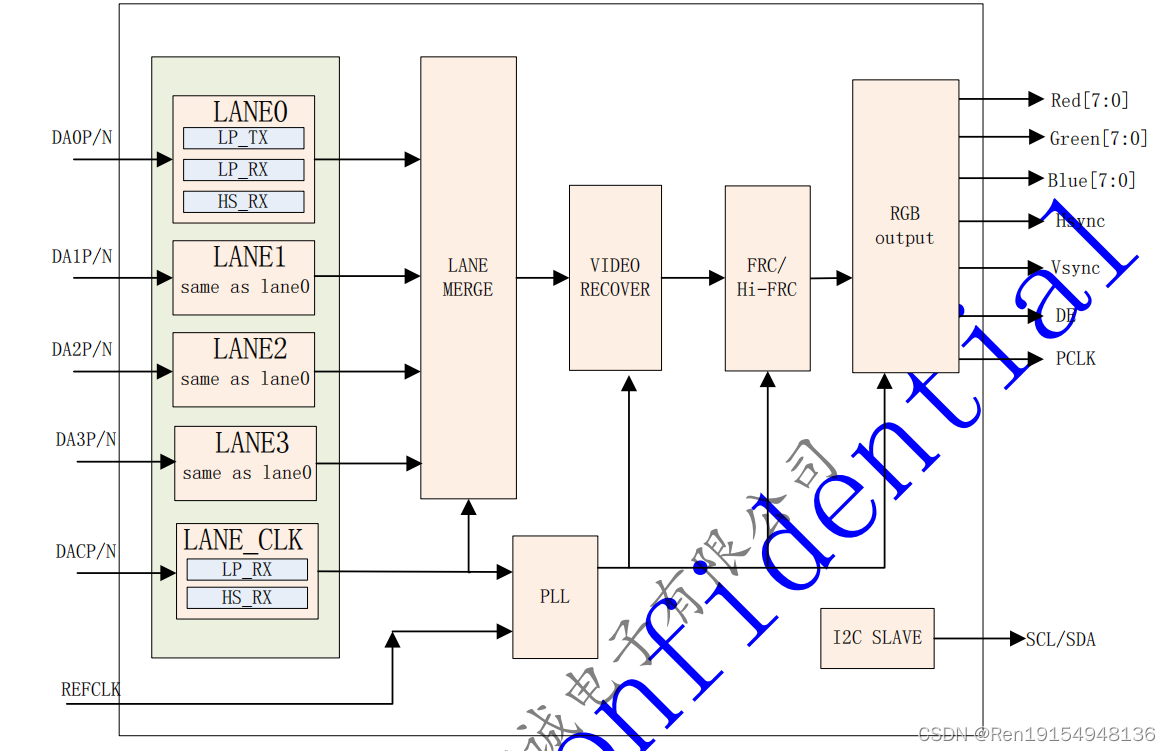2024年5月19日补充G题。
A - Exponential Plant
Problem Statement
Takahashi is growing a plant. Its height at the time of germination is
0
c
m
0\,\mathrm{cm}
0cm. Considering the day of germination as day
0
0
0, its height increases by
2
i
c
m
2^i\,\mathrm{cm}
2icm day
i
i
i’s night
(
0
≤
i
)
(0 \le i)
(0≤i).
Takahashi’s height is
H
c
m
H\,\mathrm{cm}
Hcm.
Every morning, Takahashi measures his height against this plant. Find the first day such that the plant’s height is strictly greater than Takahashi’s height in the morning.
Constraints
1
≤
H
≤
1
0
9
1 \leq H \leq 10^{9}
1≤H≤109
All input values are integers.
Input
The input is given from Standard Input in the following format:
H H H
Output
Print an integer representing the first day such that the plant’s height is greater than Takahashi’s height in the morning.
Sample Input 1
54
Sample Output 1
6
The plant’s height in the mornings of days 1 , 2 , 3 , 4 , 5 , 6 1, 2, 3, 4, 5, 6 1,2,3,4,5,6 will be 1 c m , 3 c m , 7 c m , 15 c m , 31 c m , 63 c m 1\,\mathrm{cm}, 3\,\mathrm{cm}, 7\,\mathrm{cm}, 15\,\mathrm{cm}, 31\,\mathrm{cm}, 63\,\mathrm{cm} 1cm,3cm,7cm,15cm,31cm,63cm, respectively. The plant becomes taller than Takahashi in the morning day 6 6 6, so print 6 6 6.
Sample Input 2
7
Sample Output 2
4
The plant’s height will be 7 c m 7\,\mathrm{cm} 7cm in the morning of day 3 3 3 and 15 c m 15\,\mathrm{cm} 15cm in the morning day 4 4 4. The plant becomes taller than Takahashi in the morning of day 4 4 4, so print 4 4 4. Note that, in the morning of day 3 3 3, the plant is as tall as Takahashi, but not taller.
Sample Input 3
262144
Sample Output 3
19
Solution
具体见文末视频。
Code
#include <bits/stdc++.h>
#define fi first
#define se second
#define int long long
using namespace std;
typedef pair<int, int> PII;
typedef long long LL;
signed main() {
cin.tie(0);
cout.tie(0);
ios::sync_with_stdio(0);
int x;
cin >> x;
int j = 1;
while ((1ll << j) - 1 <= x) j ++;
cout << j << endl;
return 0;
}
B - AtCoder Janken 2
Problem Statement
N
N
N AtCoder users have gathered to play AtCoder RPS 2. The
i
i
i-th user’s name is
S
i
S_i
Si and their rating is
C
i
C_i
Ci.
AtCoder RPS 2 is played as follows:
Assign the numbers
0
,
1
,
…
,
N
−
1
0, 1, \dots, N - 1
0,1,…,N−1 to the users in lexicographical order of their usernames.
Let
T
T
T be the sum of the ratings of the
N
N
N users. The user assigned the number
T
m
o
d
N
T \bmod N
TmodN is the winner.
Print the winner’s username.
- Let $L$ be the length of the shorter string among $S$ and $T$. Check if $S_i$ and $T_i$ match for $i=1,2,\dots,L$. If there exists an $i$ such that $S_i \neq T_i$, let $j$ be the smallest such $i$. Compare $S_j$ and $T_j$. If $S_j$ is alphabetically smaller than $T_j$, then $S \lt T$. Otherwise, $S \gt T$. The algorithm ends here. If there is no $i$ such that $S_i \neq T_i$, compare the lengths of $S$ and $T$. If $S$ is shorter than $T$, then $S \lt T$. If $S$ is longer, then $S \gt T$. The algorithm ends here.
1
≤
N
≤
100
1 \leq N \leq 100
1≤N≤100
S
i
S_i
Si is a string consisting of lowercase English letters with length between
3
3
3 and
16
16
16, inclusive.
S
1
,
S
2
,
…
,
S
N
S_1, S_2, \dots, S_N
S1,S2,…,SN are all distinct.
1
≤
C
i
≤
4229
1 \leq C_i \leq 4229
1≤Ci≤4229
C
i
C_i
Ci is an integer.
Input
The input is given from Standard Input in the following format:
N
N
N
S
1
S_1
S1
C
1
C_1
C1
S
2
S_2
S2
C
2
C_2
C2
⋮
\vdots
⋮
S
N
S_N
SN
C
N
C_N
CN
Output
Print the answer on a single line.
Sample Input 1
3
takahashi 2
aoki 6
snuke 5
Sample Output 1
snuke
The sum of the ratings of the three users is
13
13
13. Sorting their names in lexicographical order yields aoki, snuke, takahashi, so aoki is assigned number
0
0
0, snuke is
1
1
1, and takahashi is
2
2
2.
Since
13
m
o
d
3
=
1
13 \bmod 3 = 1
13mod3=1, print snuke, who is assigned number
1
1
1.
Sample Input 2
3
takahashi 2813
takahashixx 1086
takahashix 4229
Sample Output 2
takahashix
Solution
具体见文末视频。
Code
#include <bits/stdc++.h>
#define fi first
#define se second
#define int long long
using namespace std;
typedef pair<int, int> PII;
typedef long long LL;
signed main() {
cin.tie(0);
cout.tie(0);
ios::sync_with_stdio(0);
int n;
cin >> n;
std::vector<string> s(n);
int x, sum = 0;
for (int i = 0; i < n; i ++)
cin >> s[i] >> x, sum += x;
sort(s.begin(), s.end());
cout << s[sum % n] << endl;
return 0;
}
C - AtCoder Magics
Problem Statement
Takahashi has
N
N
N cards from the card game “AtCoder Magics.” The
i
i
i-th card will be called card
i
i
i. Each card has two parameters: strength and cost. Card
i
i
i has a strength of
A
i
A_i
Ai and a cost of
C
i
C_i
Ci.
He does not like weak cards, so he will discard them. Specifically, he will repeat the following operation until it can no longer be performed:
Choose two cards
x
x
x and
y
y
y such that KaTeX parse error: Expected 'EOF', got '&' at position 5: A_x &̲gt; A_y and KaTeX parse error: Expected 'EOF', got '&' at position 5: C_x &̲lt; C_y. Discard card
y
y
y.
It can be proved that the set of remaining cards when the operations can no longer be performed is uniquely determined. Find this set of cards.
Constraints
2
≤
N
≤
2
×
1
0
5
2 \leq N \leq 2 \times 10^5
2≤N≤2×105
1
≤
A
i
,
C
i
≤
1
0
9
1 \leq A_i, C_i \leq 10^9
1≤Ai,Ci≤109
A
1
,
A
2
,
…
,
A
N
A_1, A_2, \dots ,A_N
A1,A2,…,AN are all distinct.
C
1
,
C
2
,
…
,
C
N
C_1, C_2, \dots ,C_N
C1,C2,…,CN are all distinct.
All input values are integers.
Input
The input is given from Standard Input in the following format:
N
N
N
A
1
A_1
A1
C
1
C_1
C1
A
2
A_2
A2
C
2
C_2
C2
⋮
\vdots
⋮
A
N
A_N
AN
C
N
C_N
CN
Output
Let there be m m m remaining cards, cards i 1 , i 2 , … , i m i_1, i_2, \dots, i_m i1,i2,…,im, in ascending order. Print these in the following format:
$m$
$i_1$ $i_2$ $\cdots$ $i_m$
Sample Input 1
3
2 4
1 1
3 2
Sample Output 1
2
2 3
Focusing on cards
1
1
1 and
3
3
3, we have KaTeX parse error: Expected 'EOF', got '&' at position 5: A_1 &̲lt; A_3 and KaTeX parse error: Expected 'EOF', got '&' at position 5: C_1 &̲gt; C_3, so card
1
1
1 can be discarded.
No further operations can be performed. At this point, cards
2
2
2 and
3
3
3 remain, so print them.
Sample Input 2
5
1 1
10 2
100 3
1000 4
10000 5
Sample Output 2
5
1 2 3 4 5
In this case, no cards can be discarded.
Sample Input 3
6
32 101
65 78
2 29
46 55
103 130
52 40
Sample Output 3
4
2 3 5 6
Solution
具体见文末视频。
Code
#include <bits/stdc++.h>
#define fi first
#define se second
#define int long long
using namespace std;
typedef pair<int, int> PII;
typedef long long LL;
const int N = 2e5 + 10;
int n;
struct Inf {
int a, b, id;
bool operator< (const Inf &tmp)const {
return a < tmp.a;
}
}card[N];
signed main() {
cin.tie(0);
cout.tie(0);
ios::sync_with_stdio(0);
cin >> n;
for (int i = 1; i <= n; i ++)
cin >> card[i].a >> card[i].b, card[i].id = i;
sort(card + 1, card + 1 + n);
set<PII> tmp;
for (int i = 1; i <= n; i ++) {
while (tmp.size() && (*tmp.rbegin()).fi > card[i].b) tmp.erase(-- tmp.end());
tmp.insert({card[i].b, card[i].id});
}
std::vector<int> res;
for (auto v : tmp)
res.emplace_back(v.se);
sort(res.begin(), res.end());
cout << res.size() << endl;
for (auto v : res)
cout << v << " ";
return 0;
}
D - AtCoder Wallpaper
Problem Statement
The pattern of AtCoder’s wallpaper can be represented on the
x
y
xy
xy-plane as follows:
The plane is divided by the following three types of lines:
x
=
n
x = n
x=n (where
n
n
n is an integer)
y
=
n
y = n
y=n (where
n
n
n is an even number)
x
+
y
=
n
x + y = n
x+y=n (where
n
n
n is an even number)
Each region is painted black or white. Any two regions adjacent along one of these lines are painted in different colors.
The region containing
(
0.5
,
0.5
)
(0.5, 0.5)
(0.5,0.5) is painted black.
The following figure shows a part of the pattern.

You are given integers
A
,
B
,
C
,
D
A, B, C, D
A,B,C,D. Consider a rectangle whose sides are parallel to the
x
x
x- and
y
y
y-axes, with its bottom-left vertex at
(
A
,
B
)
(A, B)
(A,B) and its top-right vertex at
(
C
,
D
)
(C, D)
(C,D). Calculate the area of the regions painted black inside this rectangle, and print twice that area.
It can be proved that the output value will be an integer.
Constraints
−
1
0
9
≤
A
,
B
,
C
,
D
≤
1
0
9
-10^9 \leq A, B, C, D \leq 10^9
−109≤A,B,C,D≤109
KaTeX parse error: Expected 'EOF', got '&' at position 3: A &̲lt; C and KaTeX parse error: Expected 'EOF', got '&' at position 3: B &̲lt; D.
All input values are integers.
Input
The input is given from Standard Input in the following format:
A A A B B B C C C D D D
Output
Print the answer on a single line.
Sample Input 1
0 0 3 3
Sample Output 1
10
We are to find the area of the black-painted region inside the following square:
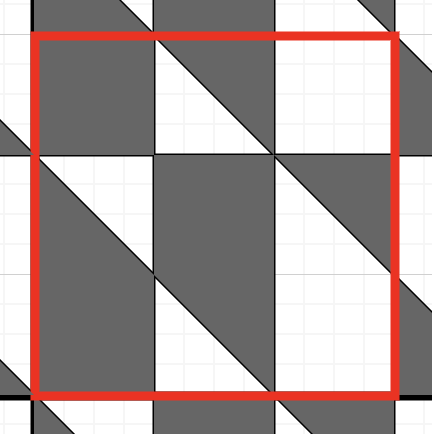
The area is
5
5
5, so print twice that value:
10
10
10.
Sample Input 2
-1 -2 1 3
Sample Output 2
11
The area is 5.5 5.5 5.5, which is not an integer, but the output value is an integer.
Sample Input 3
-1000000000 -1000000000 1000000000 1000000000
Sample Output 3
4000000000000000000
This is the case with the largest rectangle, where the output still fits into a 64-bit signed integer.
Solution
具体见文末视频。
Code
#include <bits/stdc++.h>
#define fi first
#define se second
#define int long long
using namespace std;
typedef pair<int, int> PII;
typedef long long LL;
const int INF = 1e9 + 2;
int work(int x, int y) {
int res = 0;
res += (((y + INF) / 2 + 1) / 2 * 2 + ((y + INF) / 2 - ((y + INF) / 2 + 1) / 2) * 6) * ((x + INF) / 2);
if (y & 1) {
if (((y + INF) / 2) & 1) res += ((x + INF) / 2) * 3;
else res += (x + INF) / 2;
}
if (x & 1) {
res += (((y + INF) / 2 + 1) / 2 + ((y + INF) / 2 - ((y + INF) / 2 + 1) / 2) * 3);
}
if ((x & 1) && (y & 1)) {
if (((y + INF) / 2) & 1) {
if ((x & 1) ^ (y & 1)) res += 1;
else res += 2;
} else {
if ((x & 1) ^ (y & 1)) res += 1;
}
}
return res;
}
signed main() {
cin.tie(0);
cout.tie(0);
ios::sync_with_stdio(0);
int a, b, c, d;
cin >> a >> b >> c >> d;
swap(a, b), swap(c, d);
cout << work(c, d) - work(a, d) - work(c, b) + work(a, b) << endl;
return 0;
}
E - Remove Pairs
Problem Statement
Takahashi and Aoki are playing a game using
N
N
N cards. The front side of the
i
i
i-th card has
A
i
A_i
Ai written on it, and the back side has
B
i
B_i
Bi written on it. Initially, the
N
N
N cards are laid out on the table. With Takahashi going first, the two players take turns performing the following operation:
Choose a pair of cards from the table such that either the numbers on their front sides are the same or the numbers on their back sides are the same, and remove these two cards from the table. If no such pair of cards exists, the player cannot perform the operation.
The player who is first to be unable to perform the operation loses, and the other player wins.
Determine who wins if both players play optimally.
Constraints
1
≤
N
≤
18
1 \leq N \leq 18
1≤N≤18
1
≤
A
i
,
B
i
≤
1
0
9
1 \leq A_i, B_i \leq 10^9
1≤Ai,Bi≤109
All input values are integers.
Input
The input is given from Standard Input in the following format:
N
N
N
A
1
A_1
A1
B
1
B_1
B1
A
2
A_2
A2
B
2
B_2
B2
⋮
\vdots
⋮
A
N
A_N
AN
B
N
B_N
BN
Output
Print Takahashi if Takahashi wins when both players play optimally, and Aoki otherwise.
Sample Input 1
5
1 9
2 5
4 9
1 4
2 5
Sample Output 1
Aoki
If Takahashi first removes
the first and third cards: Aoki can win by removing the second and fifth cards.
the first and fourth cards: Aoki can win by removing the second and fifth cards.
the second and fifth cards: Aoki can win by removing the first and third cards.
These are the only three pairs of cards Takahashi can remove in his first move, and Aoki can win in all cases. Therefore, the answer is Aoki.
Sample Input 2
9
3 2
1 7
4 1
1 8
5 2
9 8
2 1
6 8
5 2
Sample Output 2
Takahashi
Solution
具体见文末视频。
Code
#include <bits/stdc++.h>
#define fi first
#define se second
#define int long long
using namespace std;
typedef pair<int, int> PII;
typedef long long LL;
const int N = 20;
int n;
int a[N], b[N];
int f[1 << N];
bool check(int x) {
for (int i = 0; i < n; i ++)
for (int j = i + 1; j < n; j ++)
if ((x >> i & 1) && (x >> j & 1) && (a[i + 1] == a[j + 1] || b[i + 1] == b[j + 1]))
return 0;
return 1;
}
int rev(int x) {
if (x == 1) return 2;
else return 1;
}
signed main() {
cin.tie(0);
cout.tie(0);
ios::sync_with_stdio(0);
cin >> n;
for (int i = 1; i <= n; i ++)
cin >> a[i] >> b[i];
for (int i = 0; i < 1 << n; i ++)
if (check(i))
f[i] = 2;
for (int i = 0; i < 1 << n; i ++) {
for (int j = 0; j < n; j ++)
for (int k = j + 1; k < n; k ++)
if (!(i >> j & 1) && !(i >> k & 1) && (a[j + 1] == a[k + 1] || b[j + 1] == b[k + 1])) {
if (!f[i | (1 << j) | (1 << k)]) f[i | (1 << j) | (1 << k)] = rev(f[i]);
else if (f[i | (1 << j) | (1 << k)] == 1) continue;
else {
if (rev(f[i]) == 1) f[i | (1 << j) | (1 << k)] = 1;
}
}
}
if (f[(1 << n) - 1] == 1) cout << "Takahashi" << endl;
else cout << "Aoki" << endl;
return 0;
}
F - Useless for LIS
Problem Statement
You are given an integer sequence
A
A
A of length
N
N
N.
For each
t
=
1
,
2
,
…
,
N
t = 1, 2, \dots, N
t=1,2,…,N, determine whether
A
t
A_t
At is included in a longest increasing subsequence of
A
A
A.
Here,
A
t
A_t
At is included in a longest increasing subsequence of
A
A
A if and only if the following holds:
Let
L
L
L be the length of a longest increasing subsequence of
A
A
A. There exists a strictly increasing integer sequence
i
=
(
i
1
,
i
2
,
…
,
i
L
)
(
i
1
<
i
2
<
⋯
<
i
L
)
i = (i_1, i_2, \dots, i_L) \ (i_1 < i_2 < \dots < i_L)
i=(i1,i2,…,iL) (i1<i2<⋯<iL), where each element is between
1
1
1 and
N
N
N, inclusive, that satisfies all of the following conditions:
A
i
1
<
A
i
2
<
⋯
<
A
i
L
A_{i_1} < A_{i_2} < \dots < A_{i_L}
Ai1<Ai2<⋯<AiL.
i
k
=
t
i_k = t
ik=t for some
k
(
1
≤
k
≤
L
)
k \ (1 \leq k \leq L)
k (1≤k≤L).
You are given
T
T
T test cases; solve each of them.
1
≤
T
≤
2
×
1
0
5
1 \leq T \leq 2 \times 10^5
1≤T≤2×105
1
≤
N
≤
2
×
1
0
5
1 \leq N \leq 2 \times 10^5
1≤N≤2×105
1
≤
A
i
≤
1
0
9
1 \leq A_i \leq 10^9
1≤Ai≤109
The sum of
N
N
N across all test cases is at most
2
×
1
0
5
2 \times 10^5
2×105.
Input
The input is given from Standard Input in the following format:
T
T
T
c
a
s
e
1
\mathrm{case}_1
case1
c
a
s
e
2
\mathrm{case}_2
case2
⋮
\vdots
⋮
c
a
s
e
T
\mathrm{case}_T
caseT
Here, c a s e i \mathrm{case_i} casei represents the input for the i i i-th case. Each case is given in the following format:
N
N
N
A
1
A_1
A1
A
2
A_2
A2
⋯
\cdots
⋯
A
N
A_N
AN
Output
Print the answers in the following format:
a
n
s
w
e
r
1
\mathrm{answer}_1
answer1
a
n
s
w
e
r
2
\mathrm{answer}_2
answer2
⋮
\vdots
⋮
a
n
s
w
e
r
T
\mathrm{answer}_T
answerT
Here, a n s w e r i \mathrm{answer}_i answeri represents the output for the i i i-th case. For each case, let there be m m m indices t t t such that A t A_t At is included in a longest increasing subsequence of A A A, which are i 1 , i 2 , … , i m i_1, i_2, \dots, i_m i1,i2,…,im in ascending order. Print these in the following format:
m
m
m
i
1
i_1
i1
i
2
i_2
i2
⋯
\cdots
⋯
i
m
i_m
im
Sample Input 1
1
5
2 1 4 5 3
Sample Output 1
4
1 2 3 4
One of the longest increasing subsequences is
(
2
,
4
,
5
)
(2, 4, 5)
(2,4,5), with a length of
3
3
3. Another longest increasing subsequence is
(
1
,
4
,
5
)
(1, 4, 5)
(1,4,5). However, no longest increasing subsequence includes
A
5
A_5
A5.
Therefore, print
1
,
2
,
3
,
4
1, 2, 3, 4
1,2,3,4.
Sample Input 2
2
6
2 5 3 4 3 4
5
10000 1000 100 1 10
Sample Output 2
5
1 3 4 5 6
2
4 5
Solution
具体见文末视频。
Code
#include <bits/stdc++.h>
#define fi first
#define se second
#define int long long
using namespace std;
typedef pair<int, int> PII;
typedef long long LL;
const int N = 2e5 + 10;
int n;
int a[N], f[N], g[N];
std::vector<int> dct;
struct fenwick {
int tr[N];
void add(int x, int d) {
for (int i = x; i < N; i += (i & -i)) tr[i] = max(d, tr[i]);
}
int mx(int x) {
int res = 0;
if (!x) return res;
for (int i = x; i; i -= (i & -i)) res = max(tr[i], res);
return res;
}
}cnt1, cnt2;
int find(int x) {
return lower_bound(dct.begin(), dct.end(), x) - dct.begin() + 1;
}
void solve() {
dct.clear();
cin >> n;
for (int i = 1; i <= n; i ++)
f[i] = g[i] = cnt1.tr[i] = cnt2.tr[i] = 0;
for (int i = 1; i <= n; i ++)
cin >> a[i], dct.emplace_back(a[i]);
sort(dct.begin(), dct.end());
dct.erase(unique(dct.begin(), dct.end()), dct.end());
for (int i = 1; i <= n; i ++) {
f[i] = max(1ll, cnt1.mx(find(a[i]) - 1) + 1);
cnt1.add(find(a[i]), f[i]);
}
for (int i = n; i >= 1; i --) {
g[i] = max(1ll, cnt2.mx(dct.size() - find(a[i])) + 1);
cnt2.add(dct.size() - find(a[i]) + 1, g[i]);
}
int ans = 0;
for (int i = 1; i <= n; i ++)
ans = max(ans, f[i]);
std::vector<int> res;
for (int i = 1; i <= n; i ++)
if (f[i] + g[i] - 1 == ans)
res.emplace_back(i);
cout << res.size() << endl;
for (auto v : res)
cout << v << " ";
cout << endl;
}
signed main() {
cin.tie(0);
cout.tie(0);
ios::sync_with_stdio(0);
int dt;
cin >> dt;
while (dt --)
solve();
return 0;
}
G - Select Strings
Problem Statement
You are given
N
N
N strings
S
1
,
S
2
,
…
,
S
N
S_1, S_2, \ldots, S_N
S1,S2,…,SN consisting of lowercase English letters and
N
N
N positive integers
A
1
,
A
2
,
…
,
A
N
A_1, A_2, \ldots, A_N
A1,A2,…,AN.
A subset
T
T
T of
{
1
,
2
,
…
,
N
}
\lbrace 1, 2, \ldots, N \rbrace
{1,2,…,N} is called a good set if there is no pair
i
,
j
∈
T
(
i
≠
j
)
i, j \in T (i \neq j)
i,j∈T(i=j) such that
S
i
S_i
Si is a substring of
S
j
S_j
Sj.
Find the maximum possible value of
∑
i
∈
T
A
i
\displaystyle \sum_{i \in T} A_i
i∈T∑Ai for a good set
T
T
T.
ab is a substring of
abc, but
ac is not a substring of
abc. ## Constraints
1
≤
N
≤
100
1 \leq N \leq 100
1≤N≤100
S
i
S_i
Si is a string consisting of lowercase English letters.
1
≤
∣
S
i
∣
1 \leq |S_i|
1≤∣Si∣
∣
S
1
∣
+
∣
S
2
∣
+
…
+
∣
S
N
∣
≤
5000
|S_1| + |S_2| + \ldots + |S_N| \leq 5000
∣S1∣+∣S2∣+…+∣SN∣≤5000
1
≤
A
i
≤
1
0
9
1 \leq A_i \leq 10^9
1≤Ai≤109
Input
The input is given from Standard Input in the following format:
N
N
N
S
1
S_1
S1
S
2
S_2
S2
⋮
\vdots
⋮
S
N
S_N
SN
A
1
A_1
A1
A
2
A_2
A2
…
\ldots
…
A
N
A_N
AN
Output
Print the answer.
Sample Input 1
4
atcoder
at
coder
code
5 2 3 4
Sample Output 1
6
The possible good sets
T
T
T and their corresponding
∑
i
∈
T
A
i
\displaystyle \sum_{i \in T} A_i
i∈T∑Ai are as follows:
T
=
{
1
}
T = \lbrace 1 \rbrace
T={1}:
∑
i
∈
T
A
i
=
5
\displaystyle \sum_{i \in T} A_i = 5
i∈T∑Ai=5
T
=
{
2
}
T = \lbrace 2 \rbrace
T={2}:
∑
i
∈
T
A
i
=
2
\displaystyle \sum_{i \in T} A_i = 2
i∈T∑Ai=2
T
=
{
3
}
T = \lbrace 3 \rbrace
T={3}:
∑
i
∈
T
A
i
=
3
\displaystyle \sum_{i \in T} A_i = 3
i∈T∑Ai=3
T
=
{
4
}
T = \lbrace 4 \rbrace
T={4}:
∑
i
∈
T
A
i
=
4
\displaystyle \sum_{i \in T} A_i = 4
i∈T∑Ai=4
T
=
{
2
,
3
}
T = \lbrace 2, 3 \rbrace
T={2,3}:
∑
i
∈
T
A
i
=
5
\displaystyle \sum_{i \in T} A_i = 5
i∈T∑Ai=5
T
=
{
2
,
4
}
T = \lbrace 2, 4 \rbrace
T={2,4}:
∑
i
∈
T
A
i
=
6
\displaystyle \sum_{i \in T} A_i = 6
i∈T∑Ai=6
The maximum among them is
6
6
6, so print
6
6
6.
Sample Input 2
10
abcd
abc
ab
a
b
c
d
ab
bc
cd
100 10 50 30 60 90 80 70 40 20
Sample Output 2
260
Solution
G题讲解
AtCoder Beginner Contest 354(G 题讲解)
Code
#include <bits/stdc++.h>
#define fi first
#define se second
#define int long long
using namespace std;
typedef pair<int, int> PII;
typedef long long LL;
const int N = 2e2 + 10, M = 8e4 + 10, INF = 1e18;
int n, s, t;
string S[N];
int a[N], h[N], e[M], ne[M], f[M], idx;
int d[N], cur[N], din[N], dout[N];
void add(int a, int b, int c) {
e[idx] = b, ne[idx] = h[a], f[idx] = c, h[a] = idx ++;
e[idx] = a, ne[idx] = h[b], f[idx] = 0, h[b] = idx ++;
}
int bfs() {
memset(d, -1, sizeof d);
queue<int> q;
q.emplace(s), d[s] = 0, cur[s] = h[s];
while (q.size()) {
int u = q.front();
q.pop();
for (int i = h[u]; ~i; i = ne[i]) {
int j = e[i];
if (d[j] == -1 && f[i]) {
d[j] = d[u] + 1, cur[j] = h[j];
if (j == t) return 1;
q.emplace(j);
}
}
}
return 0;
}
int find(int u, int lim) {
if (u == t) return lim;
int flow = 0;
for (int i = cur[u]; ~i && flow < lim; i = ne[i]) {
cur[u] = i;
int j = e[i];
if (d[j] == d[u] + 1 && f[i]) {
int tmp = find(j, min(lim - flow, f[i]));
if (!tmp) d[j] = -1;
f[i] -= tmp, f[i ^ 1] += tmp, flow += tmp;
}
}
return flow;
}
int dinic() {
int res = 0, flow;
while (bfs()) while (flow = find(s, INF)) res += flow;
return res;
}
bool check(string a, string b) {
if (a.size() > b.size()) return 0;
for (int j = 0; j < b.size() - a.size() + 1; j ++)
if (b.substr(j, a.size()) == a)
return 1;
return 0;
}
signed main() {
cin.tie(0);
cout.tie(0);
ios::sync_with_stdio(0);
cin >> n;
memset(h, -1, sizeof h);
s = 0, t = 2 * n + 1;
for (int i = 1; i <= n; i ++)
cin >> S[i];
int sum = 0;
for (int i = 1; i <= n; i ++)
cin >> a[i], sum += a[i];
for (int i = 1; i <= n; i ++)
for (int j = 1; j <= n; j ++)
if (i != j && check(S[i], S[j]) && (S[i] != S[j] || i < j))
add(i, j + n, INF);
for (int i = 1; i <= n; i ++)
add(s, i, a[i]), add(i + n, t, a[i]);
cout << sum - dinic() << endl;
return 0;
}
视频题解
以下是A到F题视频讲解
AtCoder Beginner Contest 354(A ~ F 题讲解)
最后祝大家早日

